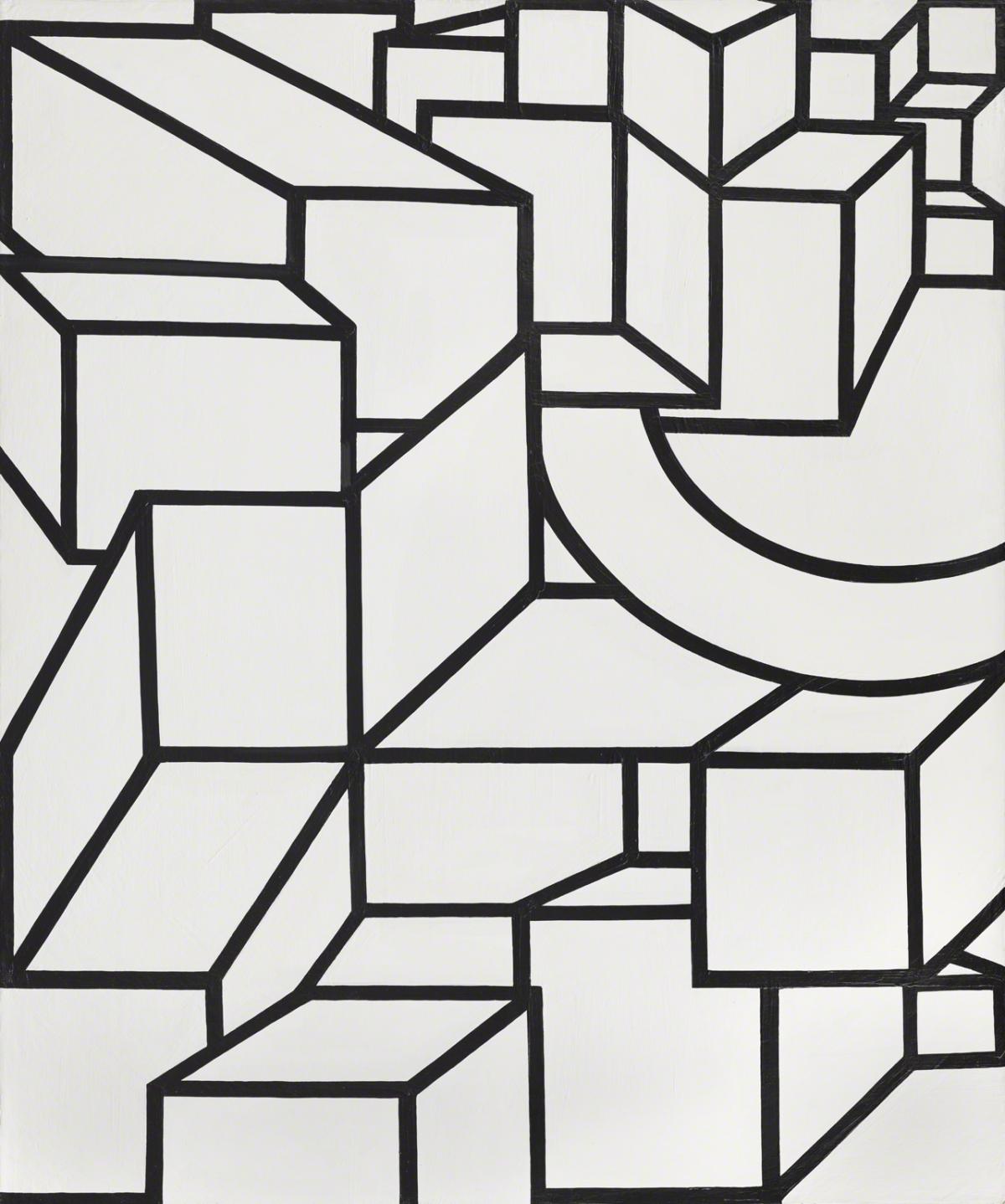B/W XII
Al Held ( 1968 )

A prominent figure among the second generation of abstract expressionists, Al Held was part of the American expatriate circle in postwar Paris that included Sam Francis, Ellsworth Kelly, and Joan Mitchell. Although Held associated with Franz Kline and Mark Rothko in New York in the 1950s, his work in the mid-1960s moved away from an expressive formalism to a reductivist view concerned with spatial illusionism as a plastic experience with philosophical implications. The disciplines of mathematics and physics were poetic sources for Held’s imagination as he sought to transform paradoxical reality into complex pictorial structures that could be experienced as ideal and harmonious spatial illusions. He expressed this view in 2003 as a desire “to show that chaos with its multiplicity of choices and possibilities can be viewed as a welcoming environment.”[1] Two important examples of Held’s work have entered The Phillips Collection in the past decade, each of which represents a significant transitional moment in the career of this seminal postwar American artist.
B/W XII is one of a series of paintings begun by Held in 1967 that relied on a restricted black-and-white palette to construct spare compositions focused exclusively on graphically defined geometric forms that create shifting perceptions of illusionary space. Boxlike geometric shapes and curved forms in B/W XII are created with uniform thick black lines that meet, stop, and start again, creating multiple perspectives and vanishing viewpoints. The composition is worked out on the canvas, where close viewing reveals subtle changes made by the artist. B/W XII, like other works in the series, evokes ideas of stability versus instability. Held remarked on this dichotomy in a 1977 essay: “[P]erceptions … keep flowing back and forth in the same space…. The structure is continually in flux … it’s constantly coming together and coming apart and coming together and coming apart.”[2]
In 1978, Held returned to using color in his work. A residency at the American Academy in Rome in 1981 further fueled his interest in color and architectural illusion as found especially in works of fifteenth-century Italian Renaissance painters such as Piero della Francesca and in the complex architectural prints of the baroque artist Giovanni Battista Piranesi. Pan North V is part of a series of works begun in 1985 that reflect these interests. Contrasting colors, bold multi-directional movement, and tight cinematic cropping are distinguishing qualities of the series. In the Phillips’s work, Held creates a screen of intersecting angles, arcs and circles beyond which a horizontal grid moves our eye into the distance to a window or a doorway into infinity. These complex visionary structures, where every line is trimmed with a razor blade and the surface sanded to flawless perfection, required Held to engage in a lengthy design process to work out in detail the composition and the colors in advance in order to achieve the final illusion of a mathematically conceived, ideal space.
1. Al Held, “Introductory Remarks,” Lecture at Reed College, April 10, 2003. Archives, Al Held Foundation.
2. Al Held, “Al Held on His Work,” in Galerie André Emmerich and Galerie Renée Ziegler, Neue Bilder und Zeichnungen/Recent Paintings and Drawings; Frühe Werke/Early Works (Zurich: Galerie André Emmerich; Galerie Renée Ziegler, 1977), n.p.
Text by Susan Behrends Frank, adapted from Seeing Differently: The Phillips Collects for a New Century (The Phillips Collection in association with Giles, 2021)